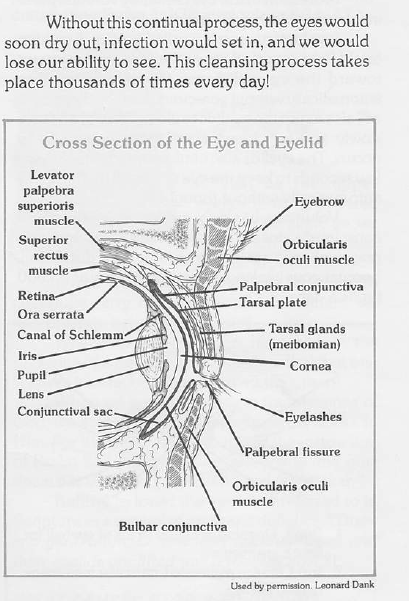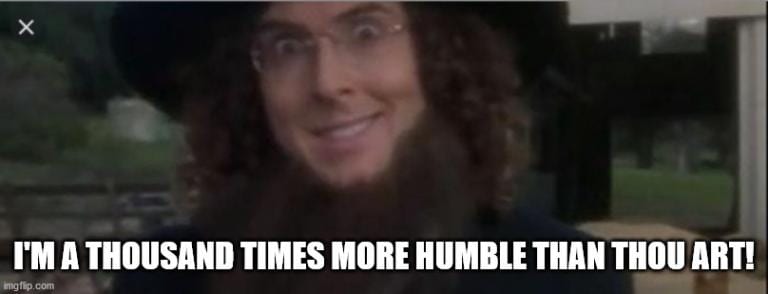Next, the booklet goes into a full page on what eyelids do in terms of cleaning, protecting and resting the eyes. The information is interesting enough, but isn’t clearly or coherently connected to ptosis since a person with ptosis can still use the eyelid for each of these functions. I’m skipping over most of that section, but I’ve included the two diagrams involved as “What NOT to do in a diagram” examples.
- First, this diagram is absurdly crowded with information.
- Second, there are several mislabeled – or poorly labeled – parts of the eye.
- The tarsal plate and the palpebral conjunctiva are not the same part of the eye, but the pointers for both are pointing to the same structure. The tarsal plate is the connective tissue a little further toward the middle of the eyelid.
- What’s the difference between the retina and the ora serrata in this diagram? In real life, the two are differentiated by the quantity and quality of light receptive cells in the tissue. Good luck figuring that out from the diagram.
- There was a much better diagram of the musculature of the eye back in the first Wisdom Booklet that is completely ignored right now.










